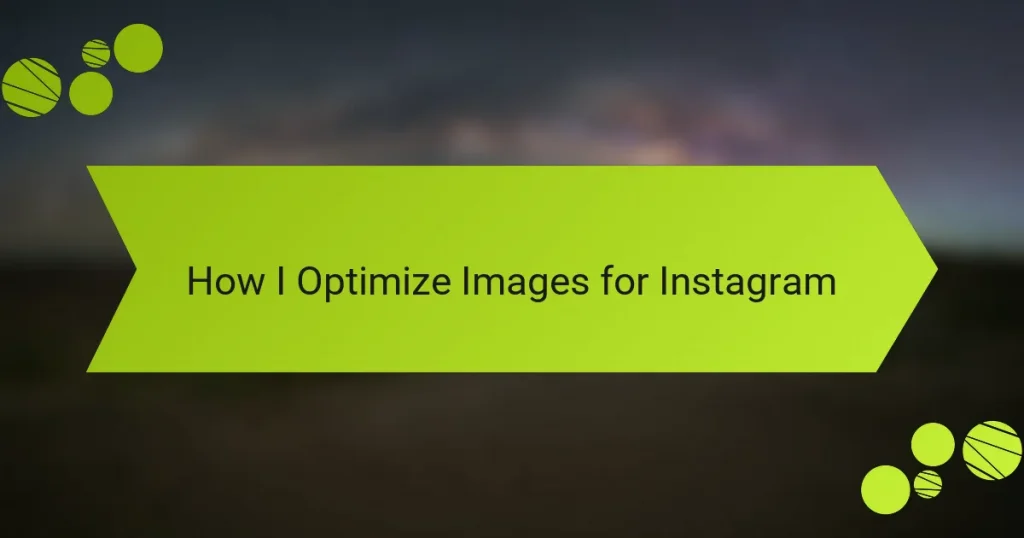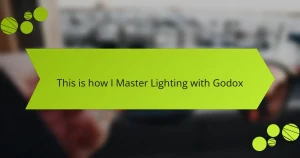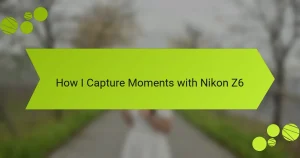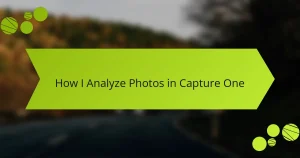Key takeaways
- Optimize image dimensions for Instagram, typically 1080 pixels wide or 1350 pixels tall, to enhance clarity and engagement.
- Use high-resolution images and appropriate formats (JPEG for photos) to maintain quality and attract interaction.
- Leverage editing tools like Adobe Lightroom and Snapseed for enhancing images, while TinyPNG helps with compression without loss of quality.
- Experiment with camera settings such as ISO, aperture, and white balance to capture vibrant and clear images that resonate with your audience.
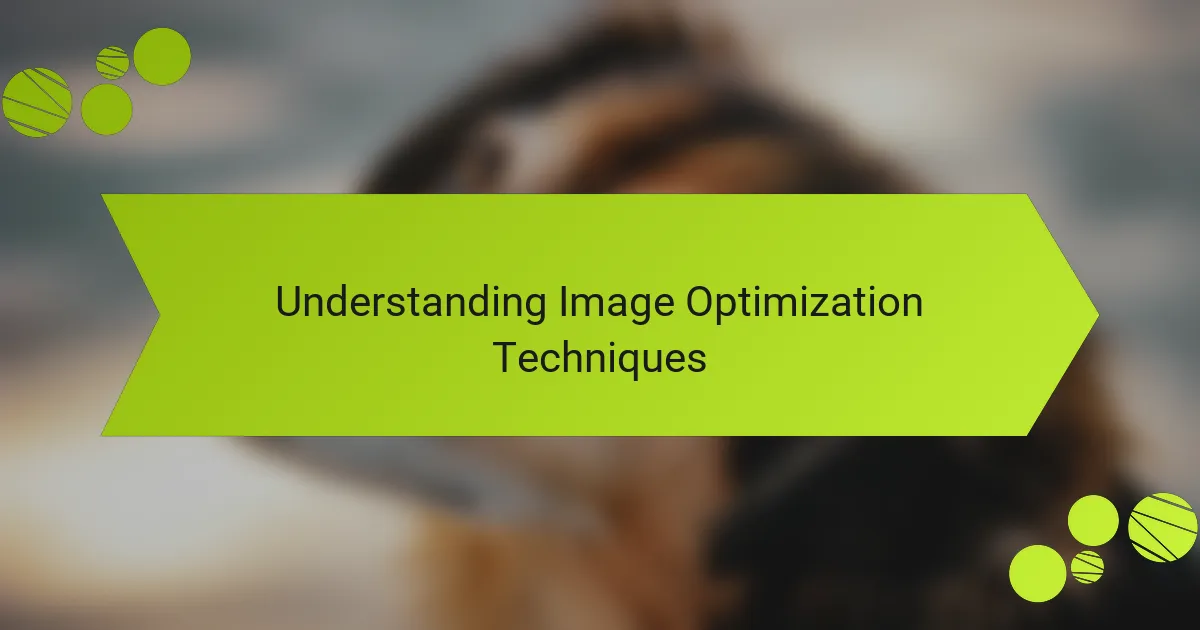
Understanding Image Optimization Techniques
Image optimization is crucial for making your Instagram posts stand out. When I first started sharing my photography, I was amazed at how much difference the right image size could make. I learned that Instagram’s preferred dimensions are 1080 pixels wide for landscape images and 1350 pixels tall for portrait images. It’s fascinating to see how a simple change in size can enhance clarity and overall engagement.
In my experience, using the appropriate file format is just as important. I’ve often found myself torn between JPEG and PNG, but I usually opt for JPEG files for most of my photos because they balance quality and file size effectively. Have you ever uploaded a stunning image only to have it look blurry or pixelated? That’s what happens when the compression isn’t managed well.
Another technique I utilize is adjusting the image resolution for optimal clarity. High-resolution images can capture intricate details, which is essential when you want your audience to appreciate the finer points of your work. I remember when I took a close-up shot of a flower and optimized the resolution; the colors popped, and the texture was vibrant! It’s incredible how investing time in these techniques can elevate your presence on Instagram.
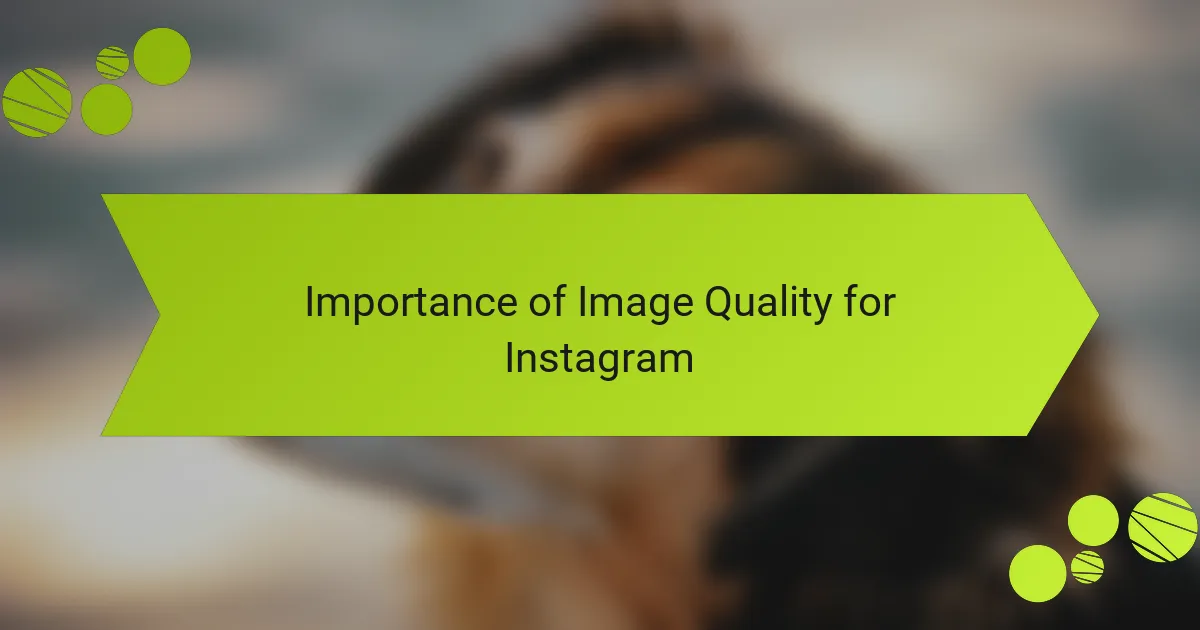
Importance of Image Quality for Instagram
Image quality is crucial for Instagram, as it directly impacts how your content is perceived. High-resolution images grab attention and encourage engagement, whether it’s through likes, comments, or shares. I’ve often found that my posts with vibrant, sharp images attract more interaction than those that are less clear.
Moreover, Instagram is a highly visual platform, so every detail matters. I remember posting a slightly blurry photo once. Despite the great caption, it didn’t perform well, which reminded me that clarity really makes a difference. It’s all about creating an engaging visual story that resonates with your audience.
Here’s a comparison of image quality considerations for Instagram posts:
| Aspect | High-Quality Image | Low-Quality Image |
|---|---|---|
| Resolution | 1080 x 1080 pixels recommended | Less than 600 pixels |
| Engagement | Higher likes and shares | Lower interaction rates |
| Visual Appeal | Attractive and professional | Looks amateurish |
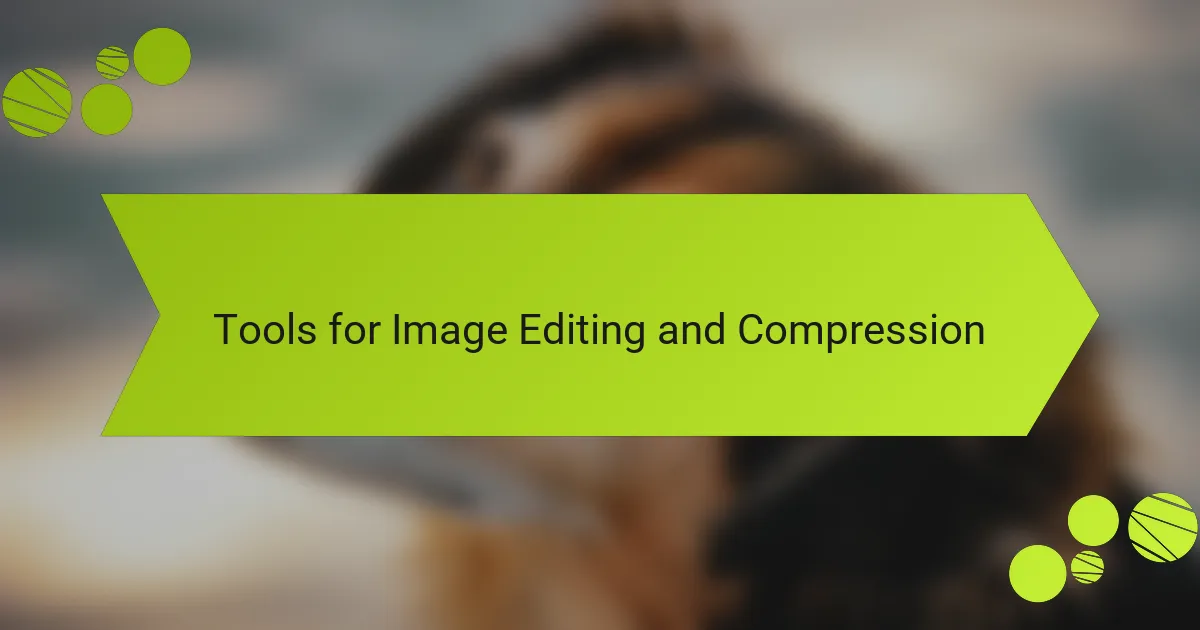
Tools for Image Editing and Compression
Image editing and compression tools play a significant role in ensuring your photos look their best on Instagram. Personally, I’ve experimented with multiple applications, but I frequently go back to Adobe Lightroom and Snapseed for their powerful editing capabilities. Have you ever spent hours curating the perfect shot, only to feel let down by the final result? Using these tools allows me to enhance colors, adjust lighting, and even fine-tune cropping with just a few taps.
When it comes to compression, my go-to has been TinyPNG. It’s remarkable how this tool reduces file size without sacrificing quality. I remember a time I uploaded an image that was too large, leading to distortion upon posting. After using TinyPNG, I was stunned at how efficiently it preserved the image clarity while making it suitable for Instagram. It’s little tools like these that can save you from frustrating experiences.
Lastly, GIMP is a fantastic option for those who prefer an open-source solution for both editing and compression. The flexibility it offers is impressive, especially for someone like me who loves to tinker with various settings. Have you tried it? The learning curve might be steep, but the results can be extremely rewarding once you get the hang of it. I’ve had countless creative breakthroughs using GIMP, leading to images I’m truly proud to share.
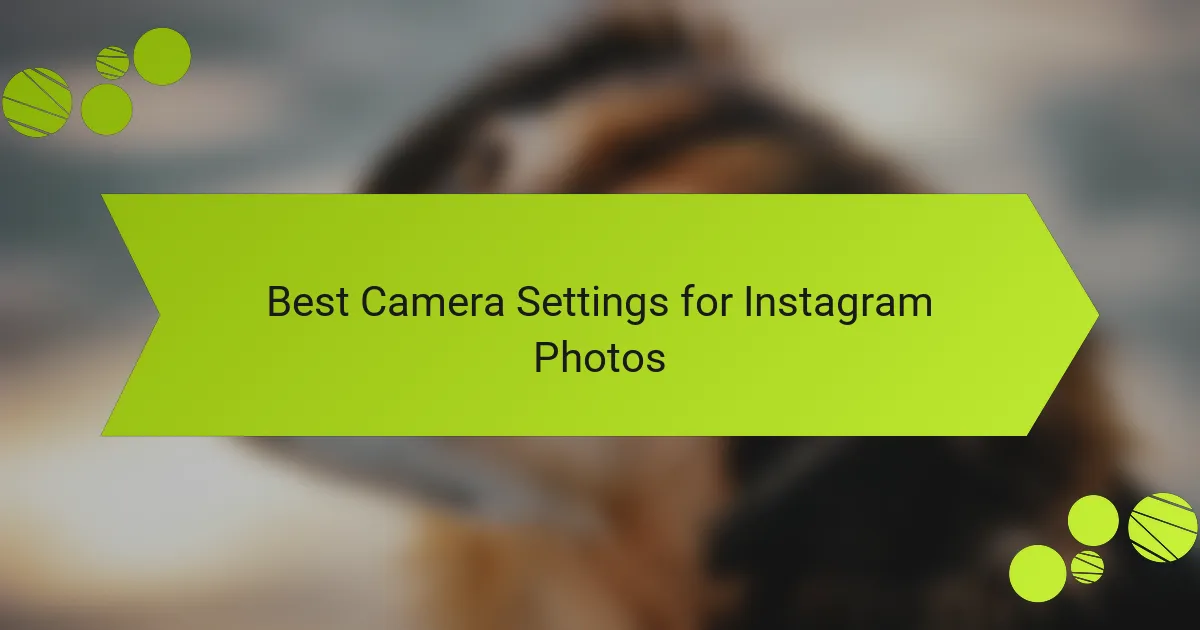
Best Camera Settings for Instagram Photos
When it comes to sharing photos on Instagram, getting the camera settings just right can make a world of difference. I’ve often found that playing with the exposure and white balance helps bring out the true colors of a scene, making my images pop. For instance, I remember capturing a sunset where adjusting the white balance transformed dull grays into stunning warm hues.
Here are some key camera settings that can elevate your Instagram photos:
- ISO: Keep it low (100-400) in bright light to reduce noise, but increase if you’re shooting in low light.
- Aperture (f-stop): Use a wide aperture (f/2.8 to f/5.6) for beautiful background blur or a narrower setting (f/8 to f/11) for more depth of field.
- Shutter Speed: Adjust to the lighting conditions; faster speeds (1/250 or higher) freeze action, while slower speeds capture movement.
- White Balance: Set the correct temperature to match the scene, whether it’s sunlight, shade, or artificial light.
- Focus Mode: Use single focus for stationary subjects and continuous focus for dynamic, moving shots.
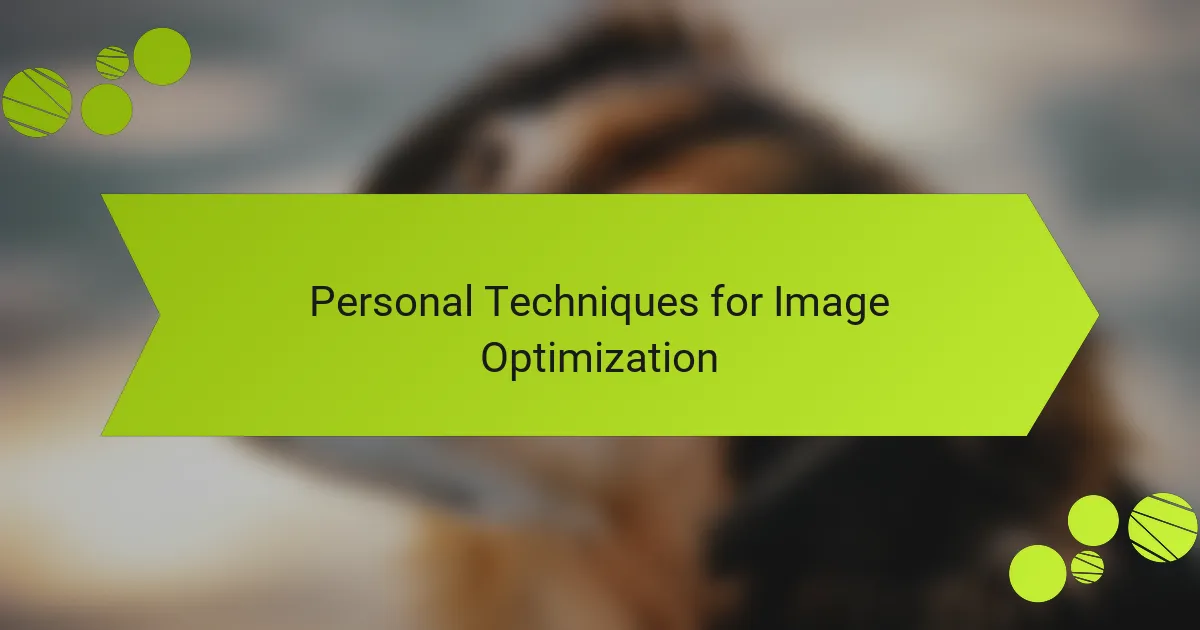
Personal Techniques for Image Optimization
When it comes to optimizing images for Instagram, I pay close attention to the details that can make or break a post. For instance, I always ensure my images are properly sized to fit the platform’s standards. Initially, I struggled with pixelation and blurriness, but once I learned to save my images at 1080 pixels wide, I saw a significant difference in clarity and appeal.
In addition to sizing, I believe in the power of editing to enhance my visuals. After using various apps, I found that subtle adjustments—like playing with brightness and contrast—can elevate an image. I often get lost in the creative process, experimenting until I feel the image truly reflects my style. Here are some of the techniques I rely on:
- Use the right dimensions: Save images at 1080 pixels wide to ensure they appear crisp.
- Edit thoughtfully: Adjust brightness, contrast, and saturation to enhance the image without overdoing it.
- Employ filters sparingly: I prefer using a light touch to maintain the image’s authenticity.
- Experiment with angles: Try different perspectives to find what resonates best.
- Consistent style: Develop a photographic style that aligns with your personal brand for cohesive aesthetics.
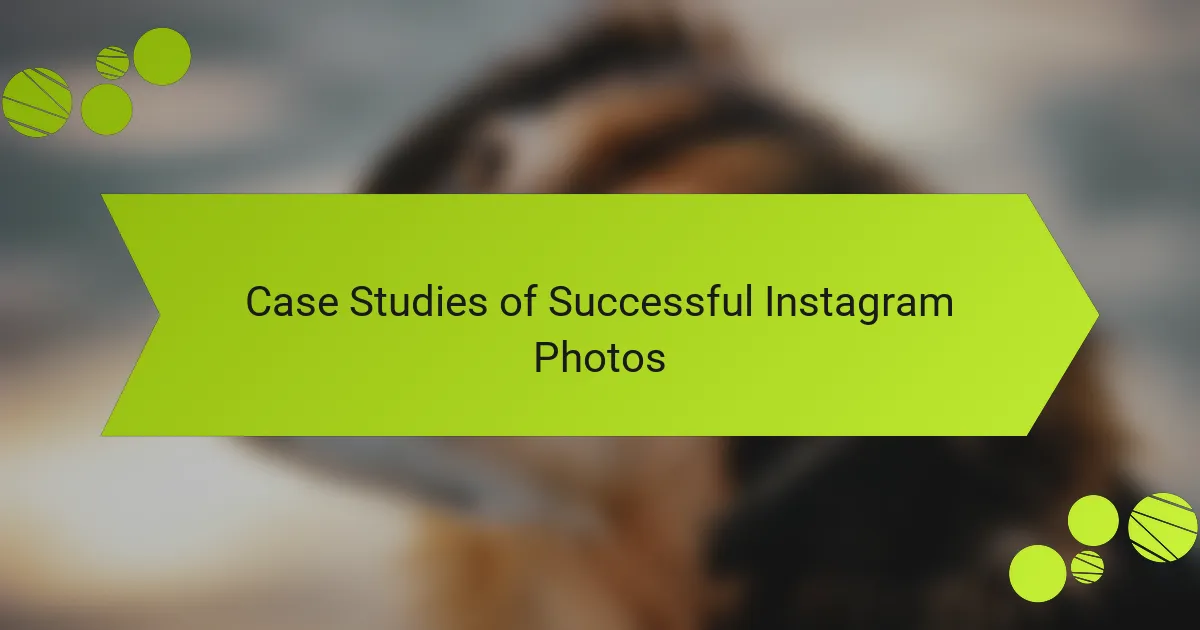
Case Studies of Successful Instagram Photos
When I think about successful Instagram photos, I can’t help but reflect on a few standout case studies that really showcase how image optimization can make a difference. For instance, I remember scrolling through a travel influencer’s feed where every photo felt immersive, transporting me to exotic locations. The secret? They meticulously edited their images to enhance colors and clarity while ensuring proper lighting for that perfect vibe. It’s amazing how a simple adjustment can transform an image, capturing the essence of a moment.
Another compelling example involves a food blogger who took the time to showcase dishes from unique angles. By using natural light and props that complemented the food, their photos became irresistible. It’s a testament to how thoughtful composition and attention to detail can resonate with viewers on a deeper level. I’ve often found myself inspired to recreate their setups, which highlights the impact of personal touch in each shot.
Finally, let’s look at a brand that launched a marketing campaign focused on user-generated content. By featuring customer photos, they created authenticity that resonated well with the audience. The emotional connection was palpable, as it transformed followers into brand advocates. These examples illustrate that behind every successful Instagram photo, there are strategies that can be applied to enhance visual storytelling.
| Case Study | Key Optimization Strategies |
|---|---|
| Travel Influencer | Enhanced colors, proper lighting |
| Food Blogger | Unique angles, natural light |
| Brand Campaign | User-generated content, authenticity |
